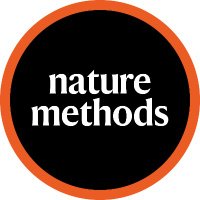
Cuilab
@cuilab_chem
The Cui lab develops new tools to advance our understandings of signal transduction in the complicated environment of living cells.
ID: 1607511456798617600
26-12-2022 22:59:47
10 Tweet
54 Takipçi
75 Takip Edilen

Dual-Color Optical Recording of Bioelectric Potentials by Polymer Electrochromism College of Chemistry UC Berkeley Berkeley Lab Berkeley Physics Wu Tsai Neurosciences Institute Stanford Chemistry Stanford University #DualColor #Bioelectric #Potentials #Polymer #Electrochromism pubs.acs.org/doi/10.1021/ja…

Can't think of a regulatory agency more entrained by the revolving door than FDA at the moment. FAA used to be up there but have changed tack after the MAX. Congressional investigation reveals 'atypical,' 'inappropriate' collaboration between FDA, Biogen bizjournals.com/boston/news/20…




Glad to share our preprint on Kirigami-inspired electronics to interface human brain organoids : biorxiv.org/content/10.110… This was large interdisciplinary effort with my co-author Xiao Yang and other colleagues in the labs of Sergiu P. Pasca and Bianxiao Cui

How do cells adhere to soft protein fibers in 3D? In an article in Nature Cell Biology today, we report curvature-dependent integrin-mediated adhesions, termed curved adhesions. Stanford Chemistry Zeinab Jahed Sarafan ChEM-H rdcu.be/dngVX

A close collaboration between Sergiu P. Pasca and Cuilab, describing the design and engineering of a Kirigami electrode for chronic recording of neural organoids. Congratulations to Xiao Yang, Csaba Forro, and coauthors. Francesca Santoro Ching-Ting Tsai

Thrilled to share that I will join Johns Hopkins University Johns Hopkins BME as an Assistant Professor in 2025! The Yang Lab will develop novel bioelectronics and biomaterials for brain-machine interfaces, regenerative medicine, and the study of human neural development and diseases.

